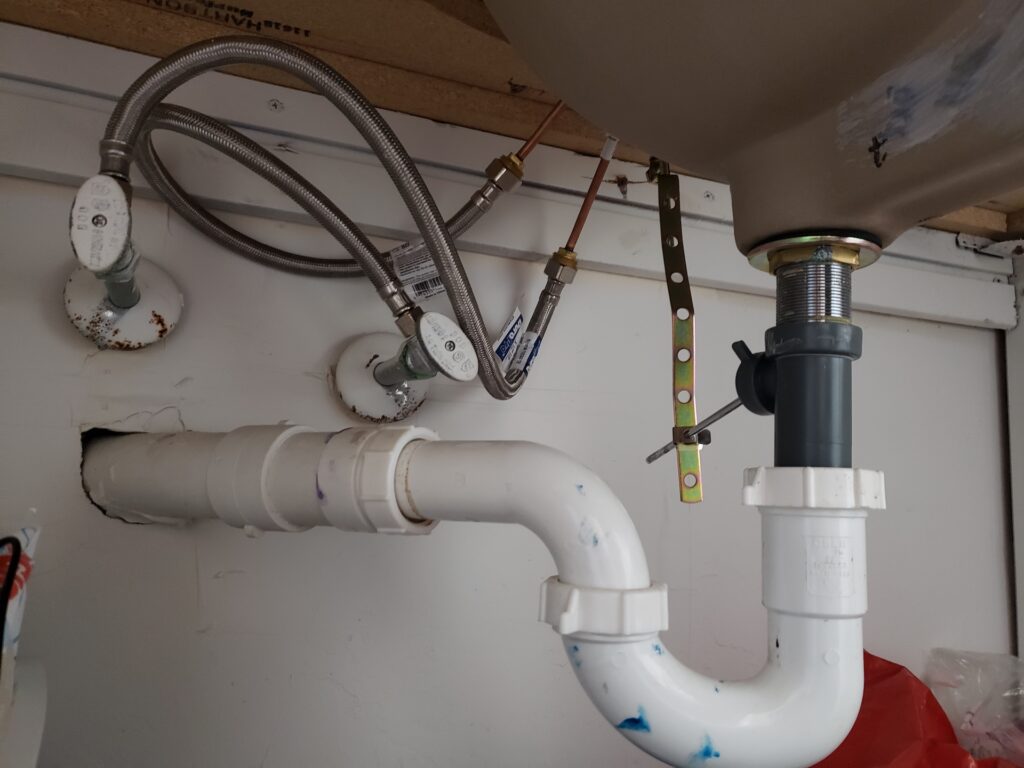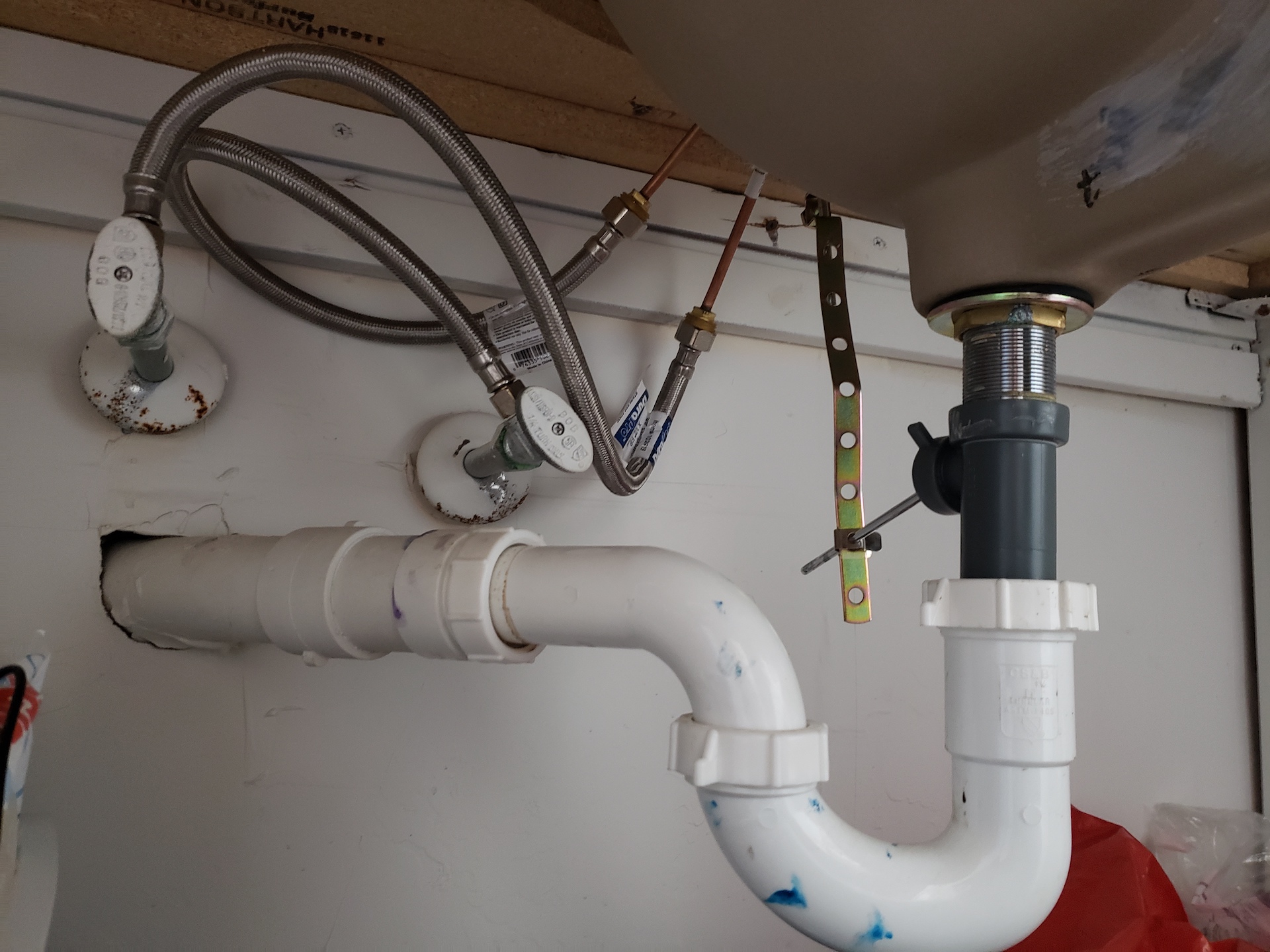
Stop the Drip: A Comprehensive Guide to Fixing a Leaking Sink
A leaking sink is more than just an annoyance; it’s a silent money drainer, a potential source of water damage, and an indicator of underlying plumbing issues. From the incessant drip-drip-drip that keeps you up at night to the slow, insidious growth of mold and mildew, a leaking sink can quickly escalate from a minor inconvenience to a major headache. This comprehensive guide provides a step-by-step approach to diagnosing, troubleshooting, and ultimately fixing a leaking sink, empowering you to tackle this common household problem with confidence and save money on costly plumbing repairs.
Understanding the Anatomy of a Sink
Before diving into the repair process, it’s crucial to understand the different components of a typical sink. This knowledge will enable you to pinpoint the source of the leak and select the appropriate repair strategy. Key components include:
- Faucet: The fixture that controls the flow of water. Common types include compression, ball, cartridge, and ceramic disc faucets.
- Handles: Used to control the hot and cold water supply.
- Spout: The curved or straight pipe that delivers water into the sink basin.
- Aerator: A screen at the end of the spout that mixes air with water to create a smoother, more consistent flow.
- Drain: The opening at the bottom of the sink that allows water to flow out.
- Stopper: A device used to block the drain.
- P-trap: A U-shaped pipe located under the sink that traps debris and prevents sewer gases from entering the home.
- Supply Lines: Flexible tubes that connect the faucet to the hot and cold water supply pipes.
- Shut-off Valves: Valves located under the sink that allow you to turn off the water supply to the faucet.
Identifying the Source of the Leak
The first step in fixing a leaking sink is to identify the exact location of the leak. This may seem obvious, but a thorough inspection is crucial to avoid misdiagnosis. Here’s a systematic approach:
- Dry the Area: Use a clean cloth to thoroughly dry the area around the sink, including the faucet, drain, supply lines, and surrounding countertop.
- Run the Water: Turn on the faucet and observe carefully. Look for drips or trickles of water.
- Check the Faucet Base: Examine the base of the faucet where it meets the sink. This is a common area for leaks.
- Inspect the Handles: Look for leaks around the base of the faucet handles.
- Examine the Spout: Check for leaks along the spout, especially at the joints.
- Check Under the Sink: Carefully inspect the drain, P-trap, supply lines, and shut-off valves. Feel for moisture with your hand.
- Run the Stopper: Fill the sink with water and plug the drain. Observe the drain flange and connection points for leaks.
Common areas for leaking sinks include:
- Faucet Base: O-rings and cartridges can wear out over time, causing leaks at the faucet base.
- Faucet Handles: Loose packing nuts or worn-out O-rings can cause leaks around the handles.
- Spout: Corrosion or loose connections can lead to leaks along the spout.
- Drain: Loose drain nuts, worn-out washers, or corroded drain pipes can cause leaks in the drain assembly.
- P-trap: Loose connections or cracks in the P-trap can result in leaks.
- Supply Lines: Damaged or corroded supply lines can leak.
- Shut-off Valves: Leaks can occur around the valve stem or connections.
Tools and Materials You’ll Need
Before you start the repair, gather the necessary tools and materials. Having everything on hand will make the process smoother and more efficient. Essential tools and materials include:
- Adjustable Wrench: Used to tighten and loosen nuts and bolts.
- Basin Wrench: A specialized wrench designed to reach tight spaces under the sink.
- Pliers: For gripping and manipulating small parts.
- Screwdrivers: Phillips and flathead screwdrivers for removing screws.
- Plumber’s Tape (Teflon Tape): Used to seal threaded connections.
- Plumber’s Putty: Used to seal around the drain flange.
- Replacement Parts: O-rings, washers, cartridges, and other parts as needed.
- Bucket: To catch water.
- Towels or Rags: For cleaning up spills.
- Safety Glasses: To protect your eyes.
- Gloves: To protect your hands.
Step-by-Step Repair Guide: Fixing Common Leaks
Once you’ve identified the source of the leak and gathered your tools, you can begin the repair. Here are some common leaking sink scenarios and how to fix them:
Fixing a Leaky Faucet Base
- Turn Off the Water: Locate the shut-off valves under the sink and turn them off.
- Disassemble the Faucet: Depending on the faucet type, you may need to remove the handle(s) and spout.
- Identify the Worn Part: Look for worn-out O-rings or cartridges.
- Replace the Part: Purchase a replacement part that matches your faucet model. Install the new part.
- Reassemble the Faucet: Reassemble the faucet in the reverse order of disassembly.
- Turn On the Water: Slowly turn on the water supply and check for leaks.
Fixing a Leaky Faucet Handle
- Turn Off the Water: Shut off the water supply to the faucet.
- Remove the Handle: Locate and remove the screw that holds the handle in place.
- Tighten the Packing Nut: Use an adjustable wrench to gently tighten the packing nut located under the handle.
- Replace the O-ring: If tightening the packing nut doesn’t stop the leak, replace the O-ring.
- Reassemble the Handle: Reattach the handle and tighten the screw.
- Turn On the Water: Turn on the water supply and check for leaks.
Fixing a Leaky Drain
- Turn Off the Water: Ensure the water supply is off.
- Loosen the Drain Nuts: Use an adjustable wrench to loosen the nuts that connect the drain pipes.
- Disassemble the Drain: Carefully disassemble the drain assembly.
- Inspect the Parts: Look for worn-out washers or corroded pipes.
- Replace the Parts: Replace any damaged or worn-out parts.
- Apply Plumber’s Putty: Apply a ring of plumber’s putty around the drain flange before reassembling.
- Reassemble the Drain: Reassemble the drain assembly, ensuring all connections are tight.
- Turn On the Water: Turn on the water and check for leaks.
Fixing a Leaky P-trap
- Turn Off the Water: Make sure the water is off.
- Loosen the P-trap Connections: Use an adjustable wrench to loosen the slip nuts that connect the P-trap to the drain pipes.
- Disassemble the P-trap: Carefully disassemble the P-trap.
- Inspect the P-trap: Check for cracks or damage to the P-trap.
- Replace the P-trap: If the P-trap is damaged, replace it with a new one.
- Reassemble the P-trap: Reassemble the P-trap, ensuring all connections are tight.
- Turn On the Water: Turn on the water and check for leaks.
Addressing Leaky Supply Lines
- Turn Off the Water: Shut off the water supply.
- Disconnect the Supply Lines: Use an adjustable wrench to disconnect the supply lines from the faucet and the shut-off valves.
- Inspect the Supply Lines: Check for cracks, corrosion, or kinks in the supply lines.
- Replace the Supply Lines: If the supply lines are damaged, replace them with new ones.
- Wrap with Teflon Tape: Apply Teflon tape to the threads of the connections.
- Reconnect the Supply Lines: Reconnect the supply lines, ensuring the connections are tight.
- Turn On the Water: Turn on the water supply and check for leaks.
Preventative Measures to Avoid Future Leaks
Preventing leaks is always better than fixing them. Here are some preventative measures you can take to minimize the risk of future leaking sink issues:
- Regular Inspections: Periodically inspect your sink and plumbing for signs of leaks or corrosion.
- Tighten Loose Connections: Regularly check and tighten any loose connections.
- Replace Worn Parts: Replace worn-out O-rings, washers, and cartridges promptly.
- Avoid Harsh Chemicals: Avoid using harsh chemicals that can corrode plumbing pipes.
- Proper Drain Maintenance: Avoid pouring grease or food scraps down the drain.
- Insulate Pipes: Insulate pipes in cold climates to prevent freezing and bursting.
When to Call a Professional Plumber
While many leaking sink repairs are relatively straightforward, some situations require the expertise of a professional plumber. Consider calling a plumber if:
- You are unable to identify the source of the leak.
- You are uncomfortable working with plumbing.
- The leak is extensive or causing significant water damage.
- You encounter complications during the repair process.
- You suspect a more serious plumbing problem.
Ignoring a leaking sink can lead to more significant problems down the road. By taking a proactive approach to identifying and fixing leaks, you can protect your home from water damage, save money on utility bills, and ensure the longevity of your plumbing system. Remember safety first – always turn off the water supply before starting any plumbing repair. If you’re unsure about any step in the process, don’t hesitate to consult a qualified plumber. [See also: Common Plumbing Problems and Solutions]
By following this guide, you can confidently tackle a leaking sink and prevent further damage to your home. Remember that a little preventative maintenance can save you a lot of trouble and expense in the long run. Addressing a leaking sink promptly is crucial for maintaining a healthy and efficient home. Ignoring the issue can lead to water damage, mold growth, and higher water bills. [See also: How to Detect Hidden Water Leaks]

